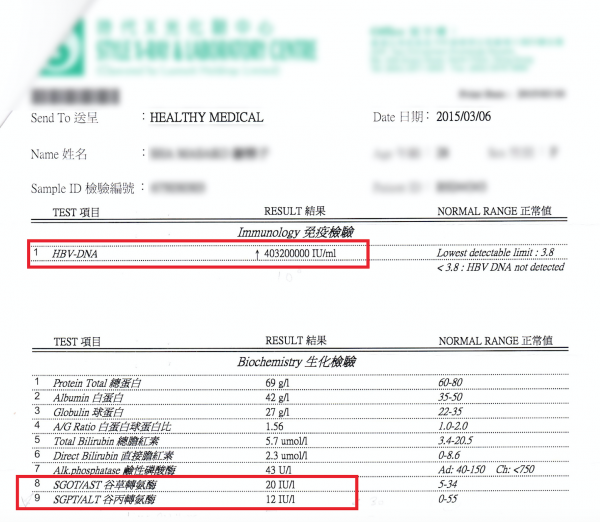Fight hepatitis B and C by “Liver Protection”!

Many chronic hepatitis B and C patients have had liver damage for more than a decade, [1] these patients are often treated with antiviral treatment, [2][3] but some patients are not able to receive antiviral treatment due to various reasons. [4] Sometimes relapse might occur after antiviral treatment. [5] In addition, the high cost also prevent patients from starting treatment. When antiviral treatment is not an option, what can chronic hepatitis patients do to fight the hepatitis B and hepatitis C virus? Are there other choices apart from antiviral treatment? Let’s take a look at this simple example:
What would you do if someone punched you in the face?
1. Do nothing, allow him to continue punching;
This choice is the most unwise. This is exactly the situation of patients who are not able to receive antiviral treatment. They are continuously under attack by the hepatitis virus, and they do nothing in response. With this approach, there is only one possible ending: the attack from hepatitis virus will continue and it will only be a matter of time before the liver can no longer take it and develop liver cirrhosis or liver cancer. [6]
2. Fight back and try to stop that person from punching you;
This approach is recommended by doctors and the pharmaceutical industry. The aim is to eliminate the virus in the body; to fight the virus, and wait for the liver to repair itself. However, as we have mentioned previously, this approach is not suitable for every patient, as the cost and risks of this approach are high. When you fight back and attack someone, it is not guaranteed that you will not get hurt. Your actions might even cause further injury, like when antiviral treatment has failed or there is relapse, not only are the viruses not cleared, overall health might also be at risk due to side effects of the treatment.
3. Defend yourself and prevent injury caused by the attacker;
This approach is worth serious consideration when dealing with hepatitis viruses, because fighting back may not be the best choice. To win, we must first learn to protect ourselves. This is the same when fighting hepatitis viruses., Why should we fight the virus in the first place? Try to think from a different angle: What if the virus attacks are not able to harm the liver, and the liver injury is not caused by the viruses inside the body? In fact, some countries do not recommend patients to receive treatment if the hepatitis virus does not cause any damage to the liver. [2] In another words, if the virus cannot cause harm to the liver, there is no need for antiviral treatment.
We have an example here: A hepatitis B patient has a very high HBV viral count (403,200,000 IU/ml), but his ALT level is completely normal (ALT: 12). This level is even better than many people who do not have hepatitis. Why is this patient’s liver able to withstand attack from such a large amount of HBV viruses? This is because he adopts the the third approach: protecting the liver and improving the immunity of the liver. When the liver is strong enough, it can repair and protect itself, regardless of the amount of hepatitis virus present in the body and injury to the liver will be limited.
Try to think of viral hepatitis as a cold or flu. In the long term, would you rather see the doctor every time you catch a cold? Or to strengthen your immune system and boost your health by a balanced diet, working out and doing exercises regularly, so that the viruses can not attack you?
The main message we want to bring out here is that there is more than one option for hepatitis patients when deciding their treatment approach. Think about the questions we mentioned above, and select your own treatment option wisely. This is the only way to protect liver function and maintain liver health.
We recommend chronic hepatitis patients to consider focusing on reducing the inflammation level in the liver, as this approach is safer, easier, cheaper and more effective. The only aim should be to lower and normalise your ALT level.
If you like to know more about how to protect your liver function and strengten liver recovery rate, please send us an email. You can also drop us your question below on our comment section.
- WHO- Hepatitis C http://www.who.int/csr/disease/hepatitis/whocdscsrlyo2003/en/index3.html#pathogenesis (Accessed: 2015-11-27)
- Hepatitis C is usually not treated unless it becomes chronic. http://www.niddk.nih.gov/health-information/health-topics/liver-disease/hepatitis-c/Pages/ez.aspx#treated (Accessed: 2015-11-27)
- Antiviral treatment- http://www.webmd.com/hepatitis/combination-antiviral-therapy-for-hepatitis-c (Accessed: 2015-11-27)
- Withdraw from antiviral treatment http://www.nhs.uk/Conditions/hepatitis-b/Pages/treatment.aspx (Accessed: 2015-11-27)
- Harvoni Relapse http://forums.hepmag.com/index.php?topic=2212.0 (Accessed: 2015-11-27)
- Hepatitis leads to cirrhosis and liver cancer http://www.liverfoundation.org/abouttheliver/info/livercancer/ (Accessed: 2015-11-27)
- * All research and clinical data should be used as reference purposes only, results may vary.







